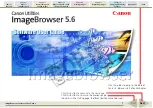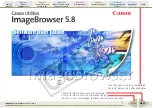
<Ins>Insert character
KODAK S-RA2500 Editing System 1.0 User Manual Page: 12
The <ENTER> key is used to terminate the entry or amendment of a frame and store the rel-
evant frame. The effects of the instruction on the state of the hardware is simultaneously
apparent in the projector display (if the latter has been enabled). If projectors are connected,
their on-line operation can be enabled by F8 so that the effect of the instruction can also be
checked „live“. SCREEN instructions, requests for user inputs and program branching are not
performed at this level because this would interfere with the editing process. These instruc-
tions can be checked by starting the program by means of the EXECUTE function under real-
time conditions.
Program instructions
When entering the individual instructions which make up your program, certain rules must be
observed regarding notation. Generally, a FRAME has the following format:
INSTRUCTION <ARGUMENTS>; (comment if applicable)
Instruction words can be abbreviated but at least sufficient characters must be entered to ensure
the word can be reliably distinguished from similar instruction words.
The arguments contain projector or auxiliary unit addresses and/or time data which must obey
certain notation rules. The following arguments are required depending on the instruction:
<adr> for instructions which contain no slide No.:
Examples:
LIGHT AProjector A beco
es bright, DARK ACEProjectors A, C, E b
come dark,
ALT A-CProjectors A, B, C crossfade
KODAK S-RA2500 Editing System 1.0 User Manual Page: 13
<adrNN> for instructions which require a slide No.:
Examples:
SLIDE A23Refers to slide No. 23 in p
ojector A, SLIDE A23 C12Slide No. 23 in projector A, slide No. 12 in
rojector C SELECT CA-C47Refers to slide No. 47 in project
s A, B, C
The types of notation represented on the previous page can also be combined, e.g. A B
DE F-P is identic
to: A-P
<t> for instructions which contain
time dat
Example:
WAIT 3.15 means wait 3












































